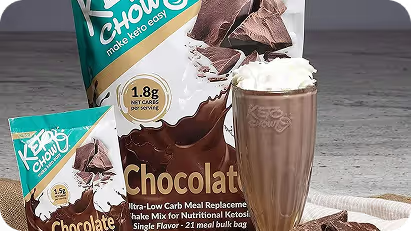Top Shopify Pricing and Subscription Discount Strategies
Subscription is usually perceived as a business model which is a win-win for both consumers and the merchants. Merchants get recurring streams of revenue (usually on a monthly basis) and customer loyalty, whereas customers save money and receive products and services conveniently.
However, today there are a myriad of subscription options available to consumers in multiple product categories. It has created a phenomenon known as subscription fatigue. Where too many subscriptions is pushing customers towards an exhaustion stage and they are beginning to question themselves if they really need so many subscriptions and is it creating as much value as they expected out of it.
Therefore, it’s becoming even more critical for brands to go back to the drawing board and set their subscription pricing and subscription discount strategies straight. With the right choice of subscription pricing model and strategic offering of discounts, you will enhance your customer retention rate and feed business growth.
Why is it important to strike the right balance between pricing and discount
Subscription pricing is key for any DTC business: one wants to go low enough to be competitive to acquire and retain subscribers, not so low that it hurts revenue and the perception of value. The subtlety of balance is in the art of strategic pricing and well-timed discounts. By carefully considering all these factors, businesses will increase their profitability while cultivating long-term customer loyalty.
This is so important in today's market environment, since the cost of earning new customers is often so exorbitant. Effective pricing minimizes customer churn; it increases lifetime value, which in turn contributes to eventual sustainable growth for DTC brands.
Pricing and discounts are critical aspects of a subscription business and brands should strategize for them diligently as a bad pricing and discounting strategy could lead to increase in customer churn rate and reduced profits.
Top subscription pricing strategies to increase profitability
Here are some of the top pricing strategies merchants can adopt in their subscription businesses to increase their profits while keeping their prices highly competitive:
- Leverage psychological pricing strategies
The basis of psychological pricing is a strategic approach through which consumer behavior can be influenced to result in a purchasing decision. It is not about covering the cost but creating a perception of value and desirability.
Just like any other business attribute, the art of pricing takes a lot of thought and strategy. This is one of the most important elements that could make all the difference in your sales, revenue, and customer satisfaction. Determined by things like material, ingredients, and production cost, strategic changes can make subtle alterations to consumer psychology and prompt them to make a purchase.
By understanding how price is perceived by the consumer, a business will be able to construct a pricing strategy that best speaks to its target audience and brings about sales. Some of the psychological pricing strategies you can implement are:
I) Charm pricing: Charm pricing is one of the most popular forms of psychological pricing, whereby prices are set just below the round number. Instead of selling an item for $20, you would sell it for $19.99. Believe it or not, this can make a huge difference to the consumer's mind.
A "left-digit bias" simply means that customers are sensitive to the leftmost digit of the price. Faced with a price like $19.99, they'll anchor onto the "1," and this price will be perceived as less than $20. That can automatically produce a rounding effect in their minds, leading to a lower perceived price and making the product appear cheaper. By applying charm pricing, a business will be perceived as giving value and hence can improve sales without major changes to their prevailing pricing structure.

II) Odd-Even pricing: Odd pricing is somewhat related to the charm pricing strategy in that people are more likely to buy items whose prices end with an odd number. This psychological tendency, odd pricing, relies on an ending digit effect in which the prices such as $18.87 have the appearance of a better value than those prices ending in even numbers, for example, $66.50.
III) Price Appearance: Have you ever realized how sometimes restaurants will not provide prices with decimal places? For example, instead of an entree being listed at $18.00, it just appears as $18. That essentially nonexisting change creates a big difference in how customers will perceive the price.
Although the numerical value stays the same, shorter prices are perceived to be cheaper. This, of course, has to do with how the human brain handles such numbers; it has a tendency to process smaller numbers quicker and easier, subconsciously relating them to lower cost. According to the New York Times, even not using the dollar sign in front of the prices will affect consumer behavior.
By taking away the dollar sign and decimals of the prices of your merchandise, you will make your customers believe that the cost of something is lower than it actually is without you having to give them actual price reductions. This is another trick you might want to apply in further enhancing sales and customer satisfaction.
IV) Anchor pricing: Price anchoring is a very powerful psychological pricing strategy that can make a product or service more attractive to the customer. You create the perception of value and may even spark purchases by setting a higher reference price.
Value anchoring works like this: Suppose you have to sell a deodorant subscription for $20/month. You can anchor its price at $25/month. Once your customers see the original price struck out and the discounted price of $20 highlighted, that subscription seems way more awesome in their minds. Why? The human brain works by comparing prices relative to some reference point. Therefore, this lower price becomes even more luring.
Anchoring the price effectively requires making both the anchor price and the price after discount stand out. Using different font sizes, colors, or other visual ways will indicate if there is some sort of price difference. Besides, highlighting the percentage of savings you get can do more in terms of pushing your value proposition.
By using strategic price anchoring, you will realize better conversions and more satisfied customers, which will, in turn, positively affect the bottom line of your business.
- Value-based pricing
Value-based pricing is a strategic approach to pricing or repricing a product based on perceived value derived by the customer. This contrasts with cost-plus pricing, which is solely based on adding a markup to production cost, in that the methodology here considers the customer's perceived value of the product.
One important concept in value-based pricing has to do with the "too good to be true" effect, where customers won't buy something if it looks too cheap. With prices that reflect perceived value, a company can avoid that trap and encourage sales.
But value-based pricing requires substantial insight into the target market and, more importantly, into their customers' preferences. Such a prerequisite can be achieved through market research, customer surveys, or analysis of purchasing trends. Thus, a firm would thereby gain insight into what customers perceive and like about the products and services by directly obtaining that data from the customers themselves.
With this information, businesses can make more informed pricing decisions that have a better chance of resonating with their target audience. Value-based pricing will allow organizations to maximize revenue while customers are satisfied and maintain a good relationship with their customers.
- Competition-based pricing

Competitor-based pricing strategy is one of the common tactics ecommerce businesses continue to apply. This analytical approach to prices includes researching similar products competitors offer and pricing your products accordingly. This will, however, aid in making sure that your products are competitively priced in order to appeal to customers.
It is important to note, however, that competitor-based pricing will be as good as the quality of your competitors' pricing research. If, for any reason, your competitors happen not to have conducted thorough market analysis and set their prices based on inaccurate or outdated information, then applying it to your brand and pricing strategy might have an adverse effect.
While ascertaining the right price using the competitor-based strategy brands must consider the following features such as brand perception, features and target audience in mind. Taking these points into consideration most likely will help you set the right price for your subscriptions.
- Bundle pricing

Image Source: Neuroscience Marketing
Product bundling is one of the popular approaches in which multiple products are sold together at a price lower than their individual prices. As part of psychological pricing, the customers perceive the value and end up buying more than they had initially planned. The businesses can use subscription data analysis in finding those products that were normally bought together and thereafter create efficient bundles that may drive customer loyalty and increase revenue.
Top subscription discount strategies to increase customer retention
The right pricing model and pricing strategy are two surefire ways of ensuring customer retention. Discounts will keep subscribers engaged and satisfied. This applies to businesses that are just starting their subscription model and also for well-established brands, since this should be one of the core building blocks in their business plan. Once you've set your prices, focus on using discounts strategically.
Here are some of the top discounting strategies you should consider to incentivize your subscribers and increase customer retention:
- Subscribe and Save
Subscribe and Save is a subscription-based service wherein customers would find it more convenient and cost-effective to order products they consume on a regular basis. Once you subscribe to this product, regular deliveries can be scheduled as per the preferred frequency so you never run out of your favorite items. No more hassle with placing individual orders; this gives convenience and peace of mind to the customer.
It brings much value to the Subscribe and Save program for the sellers by giving them an opportunity to increase recurring sales and create a loyal customer base. It helps them extend subscription services to a steadily rising market of customers who appreciate subscription services. Such a program allows the seller to establish consistency in revenue streams and to continue fostering long-term relationships with customers. Ex-Amazon subscribe and save program

It could also be interpreted to mean that Subscribe and Save delivers a hassle-free service, saves a buck or two on a customer's next purchase, or enhances the salesperson's business by improving customer satisfaction and increasing customer loyalty. It's about creating trust with the buyers to make repeat purchases, offering them a personalized and seamless shopping experience.
- Reward subscribers with loyalty incentives
It helps retain subscribers by rewarding customers through loyalty programs when returning. Whether tiered discounts or point-based, such programs introduce a considered way of providing discounts. Putting in place a loyalty program is one sure-fire method that will retain the interest of your audience. Allow subscribers to collect points when making purchases, and also allow them to redeem those points for rewards such as huge discounts.
- Leverage cancellation flows
The proactive approach to retention is simply asking subscribers why they want to cancel. Once you know the "why," you can take steps to solve their problems and do what you can to keep them from leaving.
Offering discounts may be an effective retention tool if the cost was mentioned as the main issue. It shows your flexibility in meeting their demands and how much you value their business.
Running pause and cancellation analytics on a regular basis will provide greater trending and patterning. Of course, doing retention activities at an individual subscriber level can be successful, but it's important to take a step back and understand what that says about the greater implications of this data. If there are a lot of subscribers saying "Product is too expensive" for their reason for leaving, that may indicate a revisit of pricing strategy.
You understand what your customers' needs and preferences are by seeking feedback and analyzing data on cancellations. That would give you the necessary idea to be able to make informed decisions where changes for improvement in retention and satisfaction are being instituted.
- Leverage birthdays and special occasions
By providing personalized rewards, such as discounts on birthdays or anniversary promotions, you show your appreciation and at the same time create a sense of exclusivity and worth. These little perks will make the subscriber feel special and maybe influence them to continue their loyalty to your brand.
There is probably nothing as simple yet as effective at delighting customers as a birthday discount. By giving them a discount, you are making sure the customers understand and know how much their patronage means to your business, and that they are not forgotten. These points might mean a lot in terms of improving relationships with your customers and ensuring the recurrence of purchases.
Anniversary discounts represent another personalized perk which will really work. Celebrating milestones within the subscriber journey means you appreciate them hanging on. This will be a deeper entrenchment for the subscribers into your brand's loyalty and sustain them for longer.

- Utilize holidays, seasons and trends
Events and seasonal holidays, tied to a discount, will help retain subscribers. Consistency in providing these perks within your marketing will fuel anticipation and can create much-needed buzz amongst your customers. As a matter of fact, this may be very important for retaining customers because there would always be something to which your subscribers can look forward.
Consider offering discounts around major events: Black Friday, holidays, Valentine's Day, Mother's Day, summer, and other relevant dates. Using an upsell widget provided by Smartrr or any other available tool, the process of offering a discount or access to subscriber-only items would be quite easy, which would further improve retention and customer loyalty.

- Put discounts on bundles
If your online store seeks to increase its sales and consumer loyalty, then it's well worth offering bundle discounts. Giving a discount for the purchase of several items will encourage customers to add more products in their cart. Such a retailer strategy will help increase the average check of one customer and increase the period of time he or she will stay with this store.
With bundle discounts, you earn more, but you also streamline the shopping experience of your customers. You can create bundles of products that are often bought together or go well together. This saves them time and effort in searching for their complementary items individually. Offering convenient and inexpensive bundles will help you enhance the shopping experience and ensure repeat business.
Final Thoughts
These different pricing strategies will help develop the necessary confidence in promoting your products or services within the ecommerce store. Discounts are very important because they keep customers attached and generate customer loyalty. If prices are rightly set based on consumer psychology, competitor analysis, and product value, then trust and confidence among customers will increase, which improves sales and retains customers.
Table of contents























.png)







.png)






































